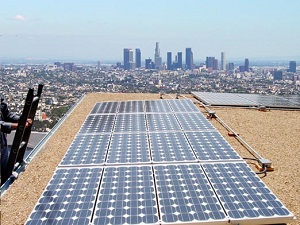Los Angeles reduces solar incentive rate
 The Los Angeles Department of Water and Power announced this week that it will reduce the dollar value of the payments it gives to customers who decide to install rooftop solar systems in order to try to extend the life of the program.
The Los Angeles Department of Water and Power announced this week that it will reduce the dollar value of the payments it gives to customers who decide to install rooftop solar systems in order to try to extend the life of the program.
In 2007, the California Sate Legislature granted $285 million to LADWP to distribute between then and 2016 to customers who installed solar systems, according to a slide presentation from the department’s workshop last week.
“If we just continue as is, we are going to run out of funding by the middle of 2012,” said Arash Saidi, an electrical engineer in the department.
The department currently pays customers $4.53 per watt for their solar systems. But because the rebate program turned out to be more popular than expected, the money is going too fast, Saidi said.
The LA department of water and power has had an incentive program in place for residential solar installations since 1999. Between then and when the California Senate passed SB1, funding utility solar programs, 800 customers installed 10 megawatts of solar power.
Since the 2007 bill passed, 1,900 customers have installed 12 megawatts of power, according to the slide presentation. And there are another 1,700 customers who have submitted applications to install 35 megawatts.
The senate initially said that LA’s department should be able to fund the creation of 280 megawatts of power.
“That’s just not realistic,” Saidi said. “There’s no way we’ll make that.”
The legislature has conceded that the megawatt numbers it suggested were arbitrary, and utilities won’t be held to those standards. But they do have to spend the money.
LA announced that it will slowly reduce the amount of the payouts to customers from $4.53 per watt to $1.62 in 2016.
The change will allow the department to fund another 1,000 customers with another 20 megawatts of power, Saidi said.
“Our goal is to keep the program going,” he said.
He added that the hope is that the price of solar materials and installation will continue to fall.
“We’re hoping that, with lower costs, this program will help to close the gaps,” Saidi said. “And it will help to level the playing field and offset some of the expense.”



